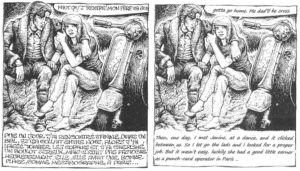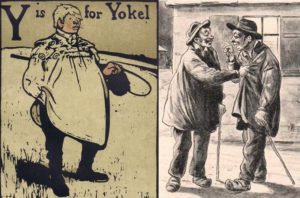General thoughts about Translation
The purpose of this article is to illustrate how the practice of translation from one language (the original) to another (the target language) goes beyond purely mechanistic processes typical of computer translation.
The preliminaries: dealing with ambiguity and redundancy
Translating original texts is hampered when they contain ambiguous passages, passages in which more than one interpretation is possible. Ambiguities characterise speech which leads, in some cases, to disambiguating responses by listeners who can ask for clarification in the following manner: do you mean ‵funny-ha-ha′ or ‵funny-peculiar′? (reflecting two incompatible meanings of the word funny); did you say ‵c-a-n′ or ‵c-a-n-t′? (reflecting a difficulty in disambiguating I can tell you from I can’t tell you). Likewise in French, in a speech given in Madagascar aimed at the French colonial empire, the celebrated statesman Charles De Gaulle expressed himself as follows: Je m’adresse aux peuples français – au pluriel (‘I address the French peoples – in the plural’), pre-empting in that manner the problem of ambiguity caused by the non-pronunciation of the plural –s in French.
Ambiguity shows itself no less in the written language; here is an example from a recent national British newspaper:
- Protestant countries showed a greater decline than Catholic ones, presumably because these nations are more accustomed to living in multigenerational, extended families.

What is referred to by these nations is unclear; it could just as well be Protestant countries as Catholic ones; only a – self-acquired – thorough understanding of general differences between European countries can lead the reader to understand that it is the latter which is intended.
Awareness of this ambiguity in the use of the third person is heightened if one knows that in certain languages such as the Algonquian languages of North America there exists a regular differentiation between the first and the second third-persons mentioned, this latter category unknown to European languages being termed the obviative (or ‵fourth person′). American amerindianist Conor McDonough Quinn is rightly enthusiastic about the importance of this feature since it informs us about denotational discrepancies in our own language:
… my absolute favorite thing about Algonquian languages [is] the ‵spotlighting′ system. It’s a beautiful feature of every language in the family, and all the more beautiful for being a system that’s only clearly found in the Algonquian family of languages and no other. It’s a true treasure of Algonquian linguistic heritage. / … this special difference is precisely where the uniqueness of Algonquian languages comes in. In fact, I never noticed this about English until Algonquian languages made me see it.
The act of translating brings out ambiguities in an original text, ambiguities that need to be ironed out. As well as translating, a seasoned translator also clarifies ambiguities which in certain cases may be so perplexing that they will need verification with the client who has commissioned the translation.
Although it is a less serious matter than ambiguity, translators face the problem of redundancy, or the needless repetition of information, in an original text. The translator may be tempted to tweak this redundancy in his translation by removing one of the phrases and leave the other in. However, apparent redundancy may sometimes mask the fact that the ‵redundancy′ is not always redundant but constitutes a wilful rhetorical or legalistic strategy in language, which Friedrich Nietzsche expressed in the following fashion:
It is good to express a matter in two ways simultaneously so as to give it both a right foot and a left. Truth can stand on one leg, to be sure; but with two it can walk and get about.
Since redundancy can represent, either, negligence or a willed outcome, it also behoves the conscientious translator to verify particular points of redundancy with clients.
In truth, whenever an original text has not yet been published, a good translation can help in improving it by pointing out to ambiguities and redundancies contained within it which are naturally more obvious to a translation specialist than to the author. In editing contexts where translation is not required, both ambiguity and redundancy would be tackled by proofreading and whilst translation and proofreading categorically do not constitute the same task, there – inevitably – cannot be but some overlap between these differing procedures.
Languages represent more than an assemblage of interchangeable labels
An unthought-through view of translation to a person who only knows their own language is that one simply translates a word into the corresponding word in the target language. However, different languages do not have an identical inventory of labels of equivalent meaning. Jean Malaurie, the French polar explorer, for example, noted that the biblical translation of give us today our daily bread in Inuit had been adjusted to give us today our daily seal since ‵bread′ originally meant nothing to these polar peoples whose staple food for sustenance was seal meat not bread.
Category mismatch between languages is most evident in their grammatical aspects; here categories such as tense, mood and aspect present mismatches that can only be either neglected or adopted in the translation to another language, depending on whether one wants to convey exoticism or not. Examples of this, with reference to English, are:
- the non-existence of a habitual aspect in many languages leads their speakers to say I am thinking you are very intelligent instead of I think you’re very intelligent. This feature is disappearing as English becomes a more familiar language to other peoples, but it was found among Gaelic and Welsh speakers in the United Kingdom and has perpetuated itself longer in the English of the Indian subcontinent;
- the non-existence of definite markers such as the definitive article in many languages leads their speakers to say man who saw accident is ill instead of a man who saw the accident is ill or the man who saw the accident is ill (ambiguity). This feature characterises the English of speakers of Slavic languages.
Generally, the grammar of the original language must be adjusted so as to become acceptable in the target language. But if one wanted to portray an Indian one might want to write them saying I am thinking you are very intelligent, and likewise to portray a Russian one might want to write them saying man who saw accident is ill.
A simplistic understanding of ‵correct′ and ‵incorrect′
The requirements of a translation can vary according to the aims which the client has for their translated text. The first thing to understand is that while there are many features which can, unequivocally, be deemed absolutely correct/incorrect in any particular language, there are in many other features of any particular language which only show a relative degree of correctness/incorrectness. This relativity of correctness depends on contextual usage, for example in English, the use of do not in conversation would strike people as austere, whereas the use of don’t in a formal document might strike people as inappropriate and diminish the authority of what would otherwise constitute a well-thought-out document. All native English speakers are aware of this difference, and this translates, roughly, into the difference in French between the use of two markers of negation ne … pas or one … pas.
The usage that has been exemplified is that found in general spoken English and French, but there are many other features in speech which are not so generalised. Here follows an example: within the last generation of British English speakers, the construction he’s stood/sat has increasingly been replacing the more correct he is standing/sitting. This new usage is a northern regionalism which – untypically for a feature of northern origin – has become increasingly adopted into all British English dialects (some have associated it with English cricket commentators, which is due to the fact that Yorkshire, a northern county, is the most successful English cricket team). However, in technically correct English, when someone is stood against a wall (as opposed to simply standing against a wall) this conveys that someone else has placed, and perhaps forced, them into that posture, and the same applies to someone sat on a bench, which does not convey an action emanating from the subject.
The increasing use of the past participle stood/sat for their infinitive counterparts constitutes a semantic weakness that ought to be resisted in technically correct English so as to avoid ambiguity. On the other hand, if one wants to convey regional or colloquial usage amongst the present-day British population in order to convey ‵local colour′ or simply to report given statements verbatim, then such use of past participles for infinitives is correct as far as usage goes. ‵Correctness′ here is a variable depending upon which consideration is given priority, being technically correct (according to mainstream dictionaries) or contextually correct (according to usage). Usage amongst the general population, or a section of it, even if it contradicts technically correct usage, is also patently correct as it represents a form of speech intended by the author of a text.
More than most, a translator knows that correct and incorrect are very simplistic notions confronting a more complex reality and that language demands latitude in deciding what is correct or incorrect according to situation.
Certainly, a straightforward piece of non-technical prose will be translated with reference to the august reference authorities that are the Oxford English Dictionaries and Le Petit Robert / Larousse dictionaries.[1] But the varieties of language which are contained under the titles ‵English′ and ‵French′ demand a broader and a deeper understanding of the languages so-called than by those codified dictionaries alone. To a large extent, the translator needs to have ‵lived′ through the medium of those languages to understand all possible nuances in these languages.
Translating real speech and slang
The widely quoted phrase that “The United States and Great Britain are two countries separated by a common language” hints at a deeper truth that differences exist not only between different languages, but within the same language between different regions, different localities and between individuals on an inter-speaker level. Such differences exist even at the intra-speaker level where the individual will speak in a different manner according to the intended audience.
Because of the wealth of variation inherent in any speech, translating everyday conversational speech into other languages is more difficult, if anything, than translating non-technical written prose. This is because no matter how well established the written standard for any language is, the everyday colloquial language (the Umgangssprache ‘interaction speech’ of the Germans) constitutes an unavoidable and fundamental reality in the manifestation of the language.

A well-evidenced home-grown ‵exoticness′ in English as in French is that register of language called ‵slang′. Keeping to the most basic explanation, slang consists of words which duplicate the functions of more recognised literary equivalents, thus, in the everyday conversation of most French speakers, the following words bouquin, bagnole, mec, nana, bouffer, bosser, se barrer replace the slightly more formal (unmarked) livre, voiture, gars, fille, manger, travailler, s’en aller (English ‘book’, ‘car’, ‘fellow’, ‘(attractive) young woman’, ‘to eat’, ‘to work’, ‘to leave’). English does not have slang equivalents for each of these words, although one can translate the slang equivalent of ‘fellow’ as fella, bloke, guy; ‘(attractive) young woman’ as doll, chick; and ‘to leave’ as to split, to be off. Depending on context, the word bagnole can be replaced in English by jalopy, banger, but only in thoses cases where the car is deemed to be particularly old or decrepit, and whereas wheels certainly constitutes a more neutral translation, in our estimation, that word is less commonly used than would be bagnole in French.
The use of slang often emphasises a negative connotation, thus, in a narrow interpretation, it can be associated with criminality, poverty, lack of education but, in a broader – and more balanced – interpretation, it is associated with conviviality and a generalised casual register of language. Indeed, some slang is derived from what is more narrowly termed an ‵argot′ in English, that is to say an insider register of language designed not to be understood by outsiders. Prime examples of argots are the well-known Cockney rhyming slang and verlan of Paris, once perhaps associated with criminality, petty or otherwise, but soon adopted to a lesser degree by the wider population of those cities and the country at large.
Translating exotic and retro-speech
Translation more often than not aims not simply to convey information but also to convey particular connotations contained in a text. This is evident in the category of literature qualified as ‵local colour′ or ‵regionalist′. Such ventures at identitarian writing, especially if they attempt to convey a wholly different language lying in the background, must always keep in mind the limits of understanding of the monoglot readers. A celebrated example of ‵local colour′ literature in English is that associated with the Irish-English literary movement of the nineteenth century which reached a new intensity in the work of J. M. Synge (1871-1907). Synge wrote English in such a way that it seemed to be Irish Gaelic, capturing some of the syntax and the rhythms of that language through the medium of English at a time when the population in the west of Ireland had only recently acquired English. The subsequent embedding of Irish-English as a recognised style in English literature probably has much to do with the wide infusion of people of Irish-Gaelic origin into English-speaking societies throughout the Anglo-Saxon world in the same period and that its success. This is a feat that very few other English ‵local colour′ literary movements are likely to replicate.

There are many more exotic Englishes than Irish English. Examples of stereotyped ‵local colour′ are the English stage yokel (mummerset) and the French cod-peasant (patois) registers which portray the rural populations unflatteringly and more often than not for comic purpose. Here follow examples of these in English and in French:
- I tell ‘ee me ‘ansum, us folk round ‘ere do be wantin’ to knaw where beest ‘ee goin’
- Dam’ oui, ce tantôt l’gâs Jean s’foutait de ma goule, j’étions traité de nigaud, c’est-y point bin beau tout çâ?
Another stereotyped register is Injun talk, which was simplified English with marked vocabulary and expressions:
- How! Me wantum you palefaces givum me Big Chief heap plenty firewater.

The most developed French version of such an exotic register of language was petit nègre ‘little negro’, associated with the French of the colonised Africans (whose original base – however tenuously linked to reality – was the simplified French spoken by the native auxiliary troops from that continent around the turn of the twentieth century at the culmination of European colonization):
- Toi écouter moi, moi y’en a êt’ faché. Ça pas bon, li pas d’oit fai’ ça. Moi y’en a vouloi’ sauver toi.
If one wants to convey Injun talk in French (apart from the use of culturally marked words such as manitou, mocassin, sachem, etc.) one can replicate some of the features of petit nègre (but not the pronunciation markers or the use of y’en a before infinitives) to give the following adaptation:
- Ugh! Toi écouter Grand Sachem. Moi vouloir aider toi. Moi être faché depuis beaucoup de lunes avec visages pâles avec langues fourchues. Eux pas bon.
It is worth adding that both Injun-talk and petit nègre became so stereotyped in their respective languages that they served mostly to portray unflattering pictures of Amerindians and Africans, which – unfortunately – served well the purpose of propagating racist views of other peoples. Notwithstanding what it represents, such registers did take hold among the linguistic repertory of the general English- and French-speaking populations, as is illustrated for French by Lattuga, born in 1940, who explains that:
my sister, my brother and their friends had got into the (tedious) habit of talking to one another in ‘little negro’ as in ‘me be heap tired, me go under quilt’. And we got so used to it that we didn’t pay much attention when we talked with people not in the know. / One day my sister, addressing someone in an evening dress, shook their hand accompanied with an adorable ‘me heap glad see you!’
ma sœur, mon frère et leurs copains et copines avaient pris l’habitude (pénible) de parler entre eux « petit nègre » dans le genre :- moi y’en a être bien fatiguée, moi y’en a aller me mettre sous la couette ! – et on avait pris tellement l’habitude qu’on ne faisait plus attention de faire attention quand on causait avec des nons initiés. / Un jour ma sœur, s’adressant à quelqu’un en tenue de soirée, lui serra la main avec un angélique – moi y’en a bien contente de voir toi !
Outwith nefarious stereotyping with which it may be associated, the point of adding ‵local colour′ in most texts is to convey exoticism to the general reader whilst keeping it fathomable to ordinary readers.
What should one do in translating a work containing ‘local colour’ from one language to another? When translating work from Irish-English into French, what can one do to convey the tone set by this register of language in English? Does one homogenise the translation to impart, at least, the literal meaning or else does one convey the heterogeneous nature of the original text in translation by attempting to find connotative equivalents to convey the feeling of the original? The answer is variable, depending on an understanding of the complex of factors that determine the propensity of the target language to accept connotations present in another.
To paraphrase a perceptive saying: ‘the past is a foreign country, they say things different there’. For most literary needs, conveying period is much the same as conveying exoticism and, of course, translation of wilful exoticism into a target language demands considerable familiarity with both cultures.
Brought up in the 1940s, my mother realised that by the late 1960s her use of the word auto instead of voiture for ‘car’ was becoming old-fashioned when a young nephew enquired of his mother Pourquoi tante X dit ‘auto’ pour ‘voiture’ ? ‘Why does auntie X say ‘automobile’ for ‘car’?’. (Note that the historical equivalence of English automobile and French auto is only relative as regards usage, notwithstanding this these words do share the characteristic of being old-fashioned equivalents of the usual modern terms).
Such an example of real-time discrepancy in linguistic usage reminds us that language not only differs according to a particular location or particular individual idiosyncrasies, but also is firmly embedded in a particular time. A seasoned translator ought to be able to convey a genuine feel of an outmoded version of language in the target language even if the corresponding equivalencies for the same words do not exist. In the absence of mechanistic equivalencies between languages, the rule is for the translator to convey the outdated character of the original by presenting other words or other expressions in the target text that are not in fact marked in the original text.

From well-evidenced, albeit minute, details, the translator must be able to represent the characteristics of any type of speech running from the contemporary period to at least the middle of the nineteenth century before which evidence on colloquial registers are much more sparse. The translator must also be able to convey stereotypical registers of languages already illustrated by exotic registers like Injun-talk. Here follows an example of cod-medieval Engish translated into cod-medieval French:
- I dyd heare that many brave knightes went forthe earlie in the morn to relishe the drynkinge of meade at ye inne and make merrye with fayre maydens.
- J’ay ouï dire que mayntes chevaliers preux s’en irent ensambles de bon matin prenant playsir à une beuverie d’idromel à l’auberge et se resjoïssant avec beles pucelles.
Professional translators working on official documentation work on a relatively narrow range of language registers. It has perhaps been made a little clearer that not all translators can seamlessly translate any particular register of one language into a target language and back again. This is where Laverne sees its specialisation.
Conclusion
Being aware of some of the intricacies of translation, clients should keep in mind their particular needs regarding a text they want translated into another language. It is hoped that a quick perusal of this article will remind them to think of and then communicate to whichever translator is chosen the outcomes they would want to achieve (or else avoid) in the translation.
[1] For English, there exists the competing standard of American English. Laverne‘s default position is that it translates into British English forms, but if clients so wish they can ask for American English, thus, for example, advisor, color, center, recognize, organization, esthetic etc. rather than the recognised British English forms colour, adviser, centre, recognise, organisation, aesthetic etc. .
POSTED 2018. Yves Onfroy ©